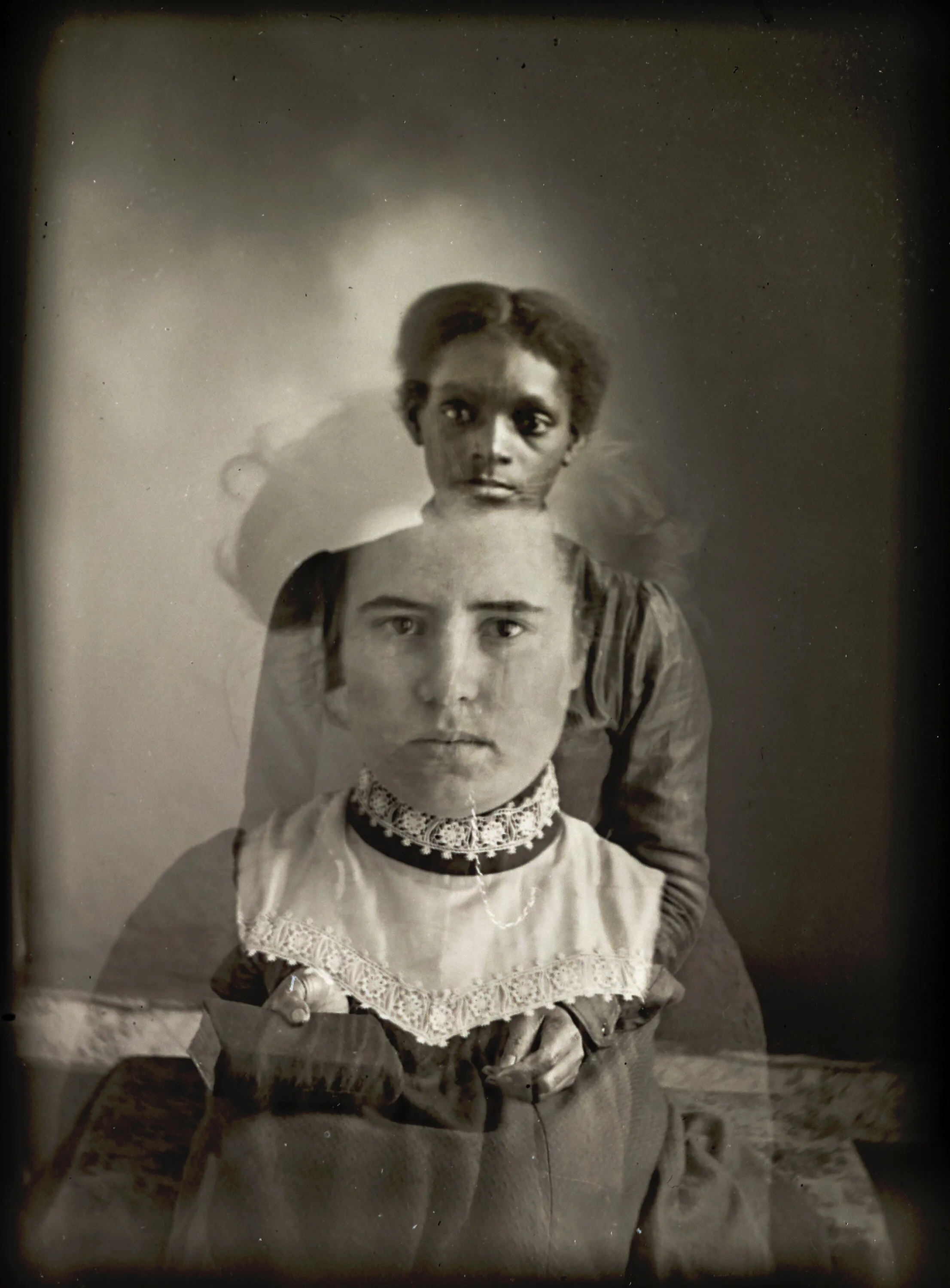HUGH MANGUM
American Visionary 1877-1922
MB Abram is honored to present, in collaboration with ACA Galleries in New York, the Where We Find Ourselves limited edition of the photographs of Hugh Mangum (1877-1922). Mangum worked throughout North Carolina, Virginia and West Virginia, in the Jim Crow South between 1897 and 1922. He defied key social and artistic traditions of his place and time.
At a time when racial segregation, discrimination, and violence against African Americans had become the order of the day in the post Reconstruction South, Hugh Mangum maintained an open door policy, photographing blacks, whites, rich and poor without distinction. He began his artistic career just a year before the Wilmington Insurrection of 1898, in which a white mob overthrew the elected government of that city, burned the only black-owned newspaper, and murdered more than sixty African Americans.
Undeterred by prevailing social mores, Mangum welcomed all to sit before his lens. He was also a keen self-portraitist, observing himself as another character in the human parade.
“Mangum’s ability to capture moments of vulnerability and intense self-recognition lies at the heart of his gift as a photographer.” — Alex Harris
Mangum began his professional life as an itinerant photographer working with a Penny Picture portrait camera. His traveling studio had a straight-forward approach: affordable pictures, quickly produced, day or night, rain or shine, no records kept of those portrayed. He pitched his tent in town after town, photographing people of all colors and walks of life at prices that allowed even the most humble to afford his services. To economize, Mangum partitioned his negatives, allowing the images of multiple subjects to be recorded on a single sheet of glass. Citizens who could not drink at the same water fountain as their neighbors, are here seated side by side, fulfilling momentarily the visions of gospel songs so well known in the day. Mangum provided an opportunity for the dignity of every individual to shine. His welcoming approach allowed sitters to express themselves as they wished, without kitschy props and devoid of the grotesque racial characterizations so common in his lifetime. One hundred years later we are privileged to have a window on a time perhaps not so distant as we may think.
From an early age Mangum announced himself as a non-conformist. Invited at the age of sixteen to attend Trinity College (later Duke University), he chose instead to study fine arts in Winston-Salem at Salem College, the oldest women’s educational institution in the South, a highly unorthodox choice.
As an itinerant photographer, Mangum followed vaudeville shows, making portraits of performers as well as spectators; stopped at roadsides, setting up his tripod to photograph workers in fields, chain gangs, and caravans of gypsies. He made photographs inside and outside of schools and churches, at congregations, and of classroom pupils, veteran groups, and family reunions. He visited people at their homes to make family portraits.
If Hugh Mangum had only defied prevailing social traditions, he would be a riveting figure. But, as Alex Harris has stated, it is Mangum’s ability to capture moments of vulnerability and intense self-recognition which sets him apart, and identifies him as a seminal artist. After riding the rails for almost two decades, Mangum established seasonal studios in Durham, and across the state border in Radford and Pulaski, Virginia. His Radford studio was destroyed by fire in 1919. Three years later he was dead of complications of flu and pneumonia at the age of 44. After his death, Mangum's glass plate negatives remained stored in his studio in a family tobacco packing barn, forgotten for almost fifty years.
“Rendered here with the aid of twenty-first-century digital technology, Hugh Mangum’s portraits demonstrate the unpredictable alchemy that often characterizes the most enduring art—its ability over time to evolve with and absorb life and meaning beyond the intentions or expectations of the artist.”
— Margaret Sartor
Mangum’s relatives turned the barn into a henhouse and toolshed, and the negatives were buried under junk and chicken droppings. His last living sibling died in 1968. The family house and land were sold for commercial development that same year. With bulldozers on site, activists managed to stop the demolition. Subsequently, during seven years of negotiations, the barn where hundreds of Mangum’s glass plate negatives were stored, remained unoccupied, trespassed upon by vandals and the elements. When the property was finally donated to the city of Durham for use as a park, the negatives, by that time many of them in scattered pieces or damaged, were donated to Duke University in 1986.
While researching their book, Where We Find Ourselves: The Photographs of Hugh Mangum 1897-1922, authors Margaret Sartor and Alex Harris recovered almost 300 additional glass negatives from local community members. In 2016, these newfound glass plates joined those previously donated to the David M. Rubenstein Rare Book, Manuscript, and Special Collections Library at Duke University.
Working for more than two years with high resolution scans, and using research and master printing skills honed in their lifetimes of photographic experience and scholarship, Sartor and Harris slowly brought Mangum’s genius fully to light. Many of Mangum’s glass plate negatives had been damaged during their long sleep in the family tobacco farm after his death. Some were broken. Some stacked face-to-face had become permanently fused together. In the case of other images from his camera, Mangum had forgotten to shift his holder to an unexposed space on his glass negative, and mistakenly exposed over a previous portrait producing unintentional double exposures. Sartor and Harris chose to embrace these alchemies of time and happenstance, recognizing that it had its own resonance and unique vitality.
Mangum’s portraiture can now be seen in all its brilliance, allowing him to take his rightful place in the pantheon of photographic art and history. Perhaps as none other, his body of work speaks to the relationship between blacks and whites, rich and poor and the shared destiny of us all in the American Experiment.
Working in collaboration with ACA Galleries in New York, and Margaret Sartor & Alex Harris in Durham, we are able for the first time to offer an exclusive limited edition of select photographs of Hugh Mangum. The edition is authorized by the David M. Rubenstein Library at Duke University, owner of the glass plate negatives. Printed by Harris and Sartor at the highest artistic and technical standards, the archival edition has a predicted stability as far into the future as Rembrandt is from us.
Please contact us for further information.


